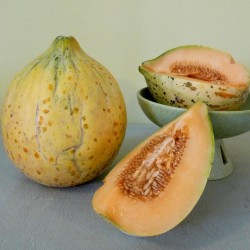Menu
-
MenuWstecz
- Home
-
Kategorie
-
-
Kategorie
-
Nasiona warzyw
-
Odmiany według kraju
- Odmiany z Armenii
- Odmiany z BiH
- Odmiany z Chorwacji
- Odmiany z Francji
- Varieties from Germany
- Varieties from Greece
- Varieties from Hungary
- Odmiany z Indii
- Varieties from Italy
- Odmiany z Japonii
- Odmiany z North Macedonii
- Varieties from Peru
- Varieties from Russia
- Varieties from Serbia
- Odmiany ze Słowenii
- Varieties from Spain
- Varieties from Thailand
- Odmiany z Turcji
- Varieties from USA
- Nasiona Pomidorów
- Nasiona kukurydzy
- Gurda rodziny
- Rodzina fasoli
- Nasiona Ogórka
- Nasiona Papryki
- Rodzina marchwi
- Rodzina cebuli
- Nasiona Sałaty
- Rodzina ziemniaków
- Rodzina kapuściana
- Nasiona Rzodkiewki
- Rodzina buraków
- Nasiona arbuza
- Nasiona melona
- Nasiona kalafiora
- Rodzina słoneczników
-
Odmiany według kraju
- Nasiona Owoców
- Nasiona Papryki Chili
- Nasiona ziół leczniczych
- Nasiona roślin pnących
- Drzewa - Krzewy - Nasiona
- Nasiona palmy
- Nasiona Traw Ozdobnych
- Nasiona tytoniu
-
Nasiona warzyw
-
-
-
-
- NOWE PRODUKTY
- Dostawa - płatność
- Utwórz konto
- FAQ
Wyniki wyszukiwania
Jest 32 produktów.
Pokazano 25-32 z 32 pozycji

Peru'dan Çeşitli
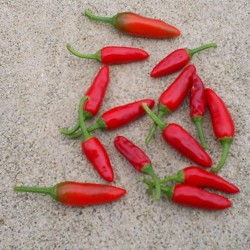
Aji Pipi de Mono Chili Seeds
Cena
1,85 €
SKU: C 101
Seeds Gallery Com,
5/
5
<!DOCTYPE html>
<html>
<head>
<meta http-equiv="Content-Type" content="text/html; charset=UTF-8" />
</head>
<body>
<h2><strong>Aji Pipi de Mono Chili Seeds</strong></h2>
<h2><strong><span style="color: #ff0000;">Price for Package of 5 seeds.</span></strong></h2>
<p>From the jungles of Peru comes the Pinguita de Mono Pepper – an Annuum type. Also known as “Little monkey dick”. This rare variety is among the hottest of the little Aji’s known in Peru measuring 70,000 – 80,000 Scoville units. The Aji Pinguita de Mono Pepper is found in all regions of the Peruvian jungle, mainly in the central valley of Chanchamayo.</p>
<p> </p>
<p>The plant is amazing and gets quite big. In a pot it grows to nearly 6 feet tall and as wide and it’s chock full of pods about 2.5cm long and around 1cm wide. An awesome producer that just continues to produce all season round.</p>
<p> </p>
<p>Flavour wise: Sweet with a touch of sour and a slight appleish as well. It is a quite unusual but amazing flavour, that you’ll have to try to believe it. We love the flavour as it is different.</p>
<p>Heat wise: Has a decent solid burn all over, that goes for ages as well.</p>
<p>The Pinguita de Mono Pepper is an easy grower, a big and bushy chilli plant, a great producer as it goes all season long, great flavour and an upper mid heat burn that you will love, we totally recommend this chilli variety.</p>
</body>
</html>
C 101


Tego produktu nie można kupić i zapłacić za pomocą PayPal lub karty
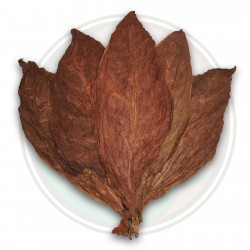
C. Criollo 98 Tobacco Seeds
Cena
2,50 €
SKU: D 12
Seeds Gallery Com,
5/
5
<h2><strong>Cuban Criollo 98 Tobacco Seeds</strong></h2>
<h2><strong><span style="color: #ff0000;">Price for Package of 50 seeds.</span></strong></h2>
<p>Another very popular Cuban cigar variety. Will grow up to 6-7 ft. tall. Its leaves are longer, more slender and slightly darker than the Habano 2000. It’s cured leaves have a silky texture making it a good covering for cigars. It has a pleasant, mild aroma and taste. Used for cigars and pipes.</p>
<p><span>Cuban Criollo 98 is one of the most valued strains for Cuban cigars. It originated from a crossing between the varieties ' Havana 92' and `Habana P.R'. Cultivated in the sun it produces from 14 to 16 useful leaves per plant and makes an excellent binder. Leaves average 24 inches in length and 12 inches wide. It is resistant to the Blue Mold, the Blackish Paw, and the Tobacco Mosaic Virus and moderately resistant to the Environmental Necrosis. Specially bred for use in cigar wrappers.</span></p>
<p><span>Soil Selection</span></p>
<p><span>Tobacco should be grown in a sunny location on well-drained soils. Poorly drained soils could result in poor growth and even death of the plants. Tobacco can be grown on poorly-drained soils if the rows or hills are bedded and ditches or furrows are used to remove excess water. Drought stress could limit growth on excessively drained soils unless irrigation is provided. Lack of sun will result in spindly plants, poor growth and thin leaves. Some types of tobacco such as that used for cigar wrappers are grown under some shade to promote desirable leaf characteristics.</span></p>
<p><span>Avoid planting tobacco on soil infested with nematodes and diseases. Grasses would be excellent rotations for tobacco, while tomato, pepper, and similar plants would not be suitable. In addition to soil-borne pests, several virus diseases and insects that attack tomato and pepper also attack tobacco, so try to keep these plants in different areas of the garden.</span></p>
<p><span>Soil pH should be about 5.8 for best growth of tobacco. If lime is needed to raise the pH, use dolomite in order to get the magnesium nutrient which is important for plant growth. Poor growth and some growth disorders may occur if the soil pH is about 6.5 or more. </span></p>
<p><span>Since tobacco seed are very small (300,000 or more per ounce), they should be sown in a greenhouse or in a protected area. The soil should be free of weed seed and disease organisms. A flower pot would be a satisfactory container if only a few transplants will be needed. Sprinkle the seed on the soil surface, then firm the soil surface to insure good seed to soil contact. Irrigate with a very fine spray, or add water to a saucer under the flower pot. Add water as often as necessary to keep the soil surface moist, but avoid excessive water.</span></p>
<p><span>Small amounts of fertilizer will be needed to produce the transplants. A tobacco fertilizer should contain little or no chlorine and most of the nitrogen should be in the nitrate form. Fertilizer manufactured for use on tomato, pepper, and potato should be satisfactory for tobacco.</span></p>
<p><span>Seed should be sown about 50-60 days prior to the desired date of transplanting. Transplanting should be after there is no further danger of freezing temperatures. Normally the best transplant is about 6-8 inches in length.</span></p>
D 12 (50 S)

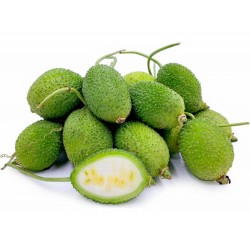
Teasel - Hedgehog Gourd...
Cena
1,75 €
SKU: PK 21
Seeds Gallery Com,
5/
5
<!DOCTYPE html>
<html>
<head>
<meta http-equiv="Content-Type" content="text/html; charset=UTF-8" />
</head>
<body>
<h2><strong>Teasel - Hedgehog Gourd Seeds (Cucumis dipsaceus)</strong></h2>
<h2><span style="color: #ff0000;"><strong>Price for Package of 10 seeds.</strong></span></h2>
<p>The Teasel - Hedgehog gourd is an egg-shaped, yellowish-green fruit, covered with a thick layer of soft spines. It has crisp, watery flesh filled with small seeds, similar to its cucumber relative. The Teasel gourd’s flavor is similar to bitter melon with light astringent notes. <br /><br /><strong>Seasons/Availability</strong></p>
<p>Teasel gourd is available during the monsoon season in India (late spring through summer). <br /><br /><strong>Current Facts</strong></p>
<p>Botanically known as Cucumis dipsaceus, the Teasel gourd is a popular vegetable in the coastal regions of India. The small spiky gourd is so popular in the Konkani region on the western coast of India that it is incorporated into many of the local monsoon festivals. Outside of India, the Teasel gourd, or Hedgehog gourd is planted as an ornamental climbing vine. Teasel gourd is also known as Kakroll or Phaagil in different areas and dialects in India. <br /><br /><strong>Nutritional Value</strong></p>
<p>Teasel gourd has antibiotic properties and has been used in Ayurvedic medicine to help blood circulation. <br /><br /><strong>Applications</strong></p>
<p>Teasel gourd is often served fried or stuffed, one of the most popular dishes made with Teasel gourd is Phaagila Podi, or Teasel fritters. Stuffed Teasel gourd is popular in Bengali cuisine. The spiky skin is cut away and the gourd cut in half; the seeds are scooped out with a spoon and added to a mixture of spices and chiles for the filling. After stuffing the seed and spice mixture into the hollow cavity of the Teasel gourd it is dipped in batter and fried in oil until browned. Slice a peeled Teasel gourd into several rounds, dust with rice flour and spices and pan fry. Teasel gourd’s mild taste picks up the spices and flavors of whatever is cooked along with it. Many dishes made with Teasel gourd are paired with rice. <br /><br /><strong>Geography/History</strong></p>
<p>The Teasel gourd is native to northeastern tropical Africa, though it can be found growing in India, Hawaii and in a small area of Baja California. Called ‘Kantola’ in Hindi, the Teasel gourd grows wild and is gathered during monsoon season. Teasel gourd can also be found frozen in Indian markets. </p>
<p> </p>
</body>
</html>
PK 21 (10 S)


Peru'dan Çeşitli
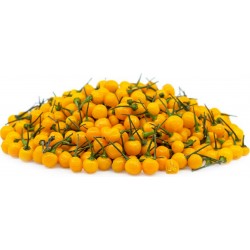
Charapita Chili 500 Seeds
Cena
70,00 €
SKU: C 24 (0.9g)
Seeds Gallery Com,
5/
5
<h2><strong>Charapita Chili 500 Seeds World’s Most Expensive Chili</strong></h2>
<h2><span style="color: #ff0000;"><strong>Price for Package of 500 (0,9 g) seeds.</strong></span></h2>
<p><span style="color: #000000;"><strong>Our Charapita plants 2019 growing just fine (see pictures)</strong></span></p>
<p><span style="color: #000000;"><strong>As you can see yourself from our photos, that the seeds are from our own plants (organically grown) and you know what you will get from the seeds you buy from us...</strong></span></p>
<p>You should never judge a pepper by its size, especially when it comes to price. The Aji Charapita chili pepper grows is roughly the size of a pea, but there’s nothing small about its price. <span style="color: #000000;"><strong>A kilogram of this stuff will set you back a whopping 20,000 Euro.</strong></span></p>
<p>Native to the jungles of norther Peru, the Aji Charapita is known as a wild pepper, and has only recently recently being cultivated for commercial use. Used fresh, this tiny pepper is said to have a strong fruity flavor that gives salsas and sauces a tropical taste, but it is mostly used in powdered form to a bit of spiciness to various dishes. Although still fairly unknown in most Western countries, the Aji Charapita is a highly sought-after treat among chili pepper connoisseurs and five-star restaurant chefs.</p>
<p>Getting your hands on a few Aji Charapita peppers is a daunting task, for two very simple reasons. First of all, it is very difficult to source outside of Peru, unless you’re willing to buy some seeds online and plant them yourself, and even if you manage to find a seller, the price is probably going to curb your enthusiasm. Nicknamed “<strong>the mother of all chilli</strong>” Aji Charapita reportedly costs a minimum of $25,000 per kilo, making it the most expensive chili pepper in the world, and one of the most expensive spices, along with vanilla and saffron.</p>
<p>With a Scolville hotness rating of between 30,000 – 50,000 heat units, the Aji Charapita will burn a hole through your tongue as well as your wallet. This rating makes it about as hot as a cayenne pepper and four to twenty times hotter than the jalapeño.</p><script src="//cdn.public.n1ed.com/G3OMDFLT/widgets.js"></script>
C 24 (0.9g)

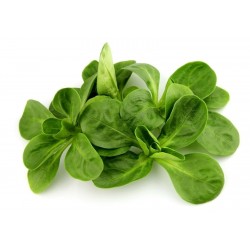
Corn Salad Seeds D'OLANDA A...
Cena
1,55 €
SKU: PL 9
Seeds Gallery Com,
5/
5
<h2><strong>Corn Salad Seeds D'OLANDA A SEME GROSSO</strong></h2>
<h2 class=""><span style="color: #ff0000;"><strong>Price for Package of 350 (1g) seeds.</strong></span></h2>
<p>Lamb’s lettuce in the UK, valeriana in Italy, corn salad in the USA and mache in France. Larger leaves than Cambrai, soft and tender texture with same great taste and cold resistance A favourite of those from cold climates where it was the first green salad vegetable to emerge from the melting snow. A delightful salad green that will only do well if grown when cold, but has great cold resistance. Direct seed in rows early spring and autumn and thin to 10cm.</p><script src="//cdn.public.n1ed.com/G3OMDFLT/widgets.js"></script>
PL 9 (1g)


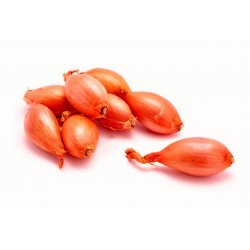
Shallot Long French Bulbs
Cena
2,50 €
SKU: P 404
Seeds Gallery Com,
5/
5
<h2><span style="text-decoration:underline;"><strong><em>Shallot Long French Bulbs</em></strong></span></h2>
<h2><span style="color:#d0121a;"><strong>Price for package with 5 Bulbs</strong></span></h2>
<p>An excellent, slightly elongated shallot, with copper-coloured skins and great tasting pink-tinged flesh. Each bulb yields 8-20 bulbs at harvest. Plant from mid January onwards. RHS Award of Garden Merit winner.</p>
<p>Grown in Brittany, in the heart of France’s main shallot growing region, these superb certified varieties are of superior quality and will produce an outstanding crop for you.</p>
<p><span><span>Hardiness:</span></span><span><span>-5 degrees</span></span></p>
<p><span><span><span>Bulbs:</span></span><span><span>True</span></span></span></p>
<p><span><span><span>Height:</span></span><span><span>31-40cm</span></span></span></p>
<p><span><span><span>Spread:</span></span><span><span>11-20cm</span></span></span></p>
<p><span><span><span>RHS Award of Garden Merit:</span></span><span><span>True</span></span></span></p>
<p><span><span><span>Beds & Borders:</span></span><span><span>True</span></span></span></p>
<p><span><span><span>Prefers Full Sun:</span></span><span><span>True</span></span></span></p>
<h1 class="title style-scope ytd-video-primary-info-renderer"><a href="https://youtu.be/GGEb4C2bb9s" target="_blank" rel="noreferrer noopener">Harvesting Shallots & Potatoes & Leeks</a></h1>
<h2><strong>WIKIPEDIA:</strong></h2>
<p>The <b>shallot</b> is a type of onion, specifically a botanical variety of the species <i>Allium cepa</i>.</p>
<p>The shallot was formerly classified as a separate species, <i>A. ascalonicum</i>, a name now considered a synonym of the currently accepted name.</p>
<p>Its close relatives include the garlic, leek, chive, and Chinese onion.</p>
<h2><span class="mw-headline" id="Names">Names</span></h2>
<div class="thumb tright">
<div class="thumbinner">
<div class="thumbcaption">Shallots are called "small onions" in South India and are used extensively in cooking there.</div>
</div>
</div>
<p>Shallots probably originated in Central or Southwest Asia, travelling from there to India and the eastern Mediterranean. The name "shallot" comes from Ashkelon, an ancient Canaanite city,<sup id="cite_ref-5" class="reference">[5]</sup> where people in classical Greek times believed shallots originated.<sup id="cite_ref-Field_Guide_6-0" class="reference">[6]</sup></p>
<p>The name <i>shallot</i> is also used for the Persian shallot <i>(A. stipitatum)</i>, from the Zagros Mountains in Iran and Iraq. The term <i>shallot</i> is further used for the French red shallot (<i>Allium cepa</i> var. <i>aggregatum</i>, or the <i>A. cepa</i> Aggregatum Group) and the French gray shallot or griselle (<i>Allium oschaninii</i>), a species referred to as "true shallot";<sup id="cite_ref-Field_Guide_6-1" class="reference">[6]</sup> it grows wild from Central to Southwest Asia. The name <i>shallot</i> is also used for a scallion in New Orleans and among English-speaking people in Quebec while the term <i>French shallot</i> refers to the plant referred to on this page.<sup id="cite_ref-7" class="reference">[7]</sup> Anglophone Quebecers and British English speakers stress the second syllable of <i>shallot</i>.</p>
<p>The term <i>eschalot</i>, derived from the French word <i>échalote</i>, can also be used to refer to the shallot.<sup id="cite_ref-8" class="reference">[8]</sup></p>
<h2><span class="mw-headline" id="Description_and_cultivation">Description and cultivation</span></h2>
<div class="thumb tleft">
<div class="thumbinner"><img alt="" src="https://upload.wikimedia.org/wikipedia/commons/thumb/a/a4/A._cepa_var._aggregatum_conreu.JPG/150px-A._cepa_var._aggregatum_conreu.JPG" width="150" height="113" class="thumbimage" /><div class="thumbcaption">
<div class="magnify"></div>
Shallot plant (<i>A. cepa var. aggregatum</i>) growing in Castelltallat, Spain</div>
</div>
</div>
<div class="thumb tright">
<div class="thumbinner"><img alt="" src="https://upload.wikimedia.org/wikipedia/commons/thumb/9/9c/2005onion_and_shallot.PNG/150px-2005onion_and_shallot.PNG" width="150" height="66" class="thumbimage" /><div class="thumbcaption">
<div class="magnify"></div>
Onion and shallot output in 2005</div>
</div>
</div>
<div class="thumb tright">
<div class="thumbinner"><img alt="" src="https://upload.wikimedia.org/wikipedia/commons/thumb/e/e2/Shallot_whole_plant.jpg/220px-Shallot_whole_plant.jpg" width="220" height="60" class="thumbimage" /><div class="thumbcaption">
<div class="magnify"></div>
Whole shallot plants, consist of roots, bulbs, leaves, stalks, and flowers</div>
</div>
</div>
<div class="thumb tright">
<div class="thumbinner"><img alt="" src="https://upload.wikimedia.org/wikipedia/commons/thumb/0/06/Shallot_seeds.png/150px-Shallot_seeds.png" width="150" height="113" class="thumbimage" /><div class="thumbcaption">
<div class="magnify"></div>
Shallot seeds</div>
</div>
</div>
<div class="thumb tleft">
<div class="thumbinner"><img alt="" src="https://upload.wikimedia.org/wikipedia/commons/thumb/f/fe/Shallot_%28Sambar_Onion%29_%281%29.JPG/150px-Shallot_%28Sambar_Onion%29_%281%29.JPG" width="150" height="113" class="thumbimage" /><div class="thumbcaption">
<div class="magnify"></div>
Shallots on sale in India</div>
</div>
</div>
<p>Like garlic, shallots are formed in clusters of offsets with a head composed of multiple cloves. The skin colour of shallots can vary from golden brown to gray to rose red, and their off-white flesh is usually tinged with green or magenta.</p>
<p>Shallots are extensively cultivated for culinary uses, propagated by offsets. In some regions ("long-season areas"), the offsets are usually planted in autumn (September or October in the Northern Hemisphere).<sup id="cite_ref-9" class="reference">[9]</sup> In some other regions, the suggested planting time for the principal crop is early spring (typically in February or the beginning of March in the Northern Hemisphere).</p>
<p>In planting, the tops of the bulbs should be kept a little above ground, and the soil surrounding the bulbs is often drawn away when the roots have taken hold. They come to maturity in summer, although fresh shallots can now be found year-round in supermarkets. Shallots should not be planted on ground recently manured.</p>
<p>In Africa, shallots are grown in the area around Anloga in southeastern Ghana.</p>
<p>Shallots suffer damage from leek moth larvae, which mine into the leaves or bulbs of the plant.</p>
<p></p>
P 404


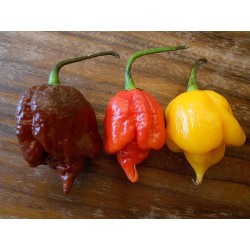
Trinidad Scorpion Red and...
Cena
2,95 €
SKU: C 2
Seeds Gallery Com,
5/
5
<h2><span style="text-decoration:underline;"><em><strong>Trinidad Scorpion Red and Yellow Seeds 1,5 mill. Scoville Units</strong></em></span></h2>
<h3><span style="color:#ff0000;">Price for Package of 5 seeds.</span></h3>
<div>Trinidad Scorpion chilli pepper is one serious chilli with more than a just sting in its tail – it’s an explosion! It is a bumpy shaped red chilli and a number of the pods develope the ‘tail’ hence the name of ‘scorpion’. Red Trindad Scorpion pods have a thin skin & measure 5-7.5cm long by 3cm wide. It is a tall variety that can reach 1m but it needs a long season to fruit so needs to be sown indoors very early in the season.</div>
<div> </div>
<div>Tricky to grow & germinate – needs very specific temps but when successful it is worth the effort & wait.</div>
<div>The Trinidad Scorpion is one of the Hottest Peppers in the World. Trinidad is a large Island northeast of Venezuela. The people of Trinidad love cooking with hot chiles. The Trinidad Scorpion though is not usually found in markets. In fact it is so hot many locals never use it for cooking. It's primary use is for military grade mace. It is also used in marine paint to keep barnacles from growing on the bottoms of boats. But the Trinidad Scorpion is still a favorite of chile heads around the world. Not just because it has the heat of a Bhut Jolokia. But it also has a great flavor as well. Just keep in mind you only need a small amount in whatever you cook. In my opinion it is hotter than the Bhut Jolokia. At least when I tasted it I had more pain than I felt with the Bhut Jolokia pepper.</div>
C 2


